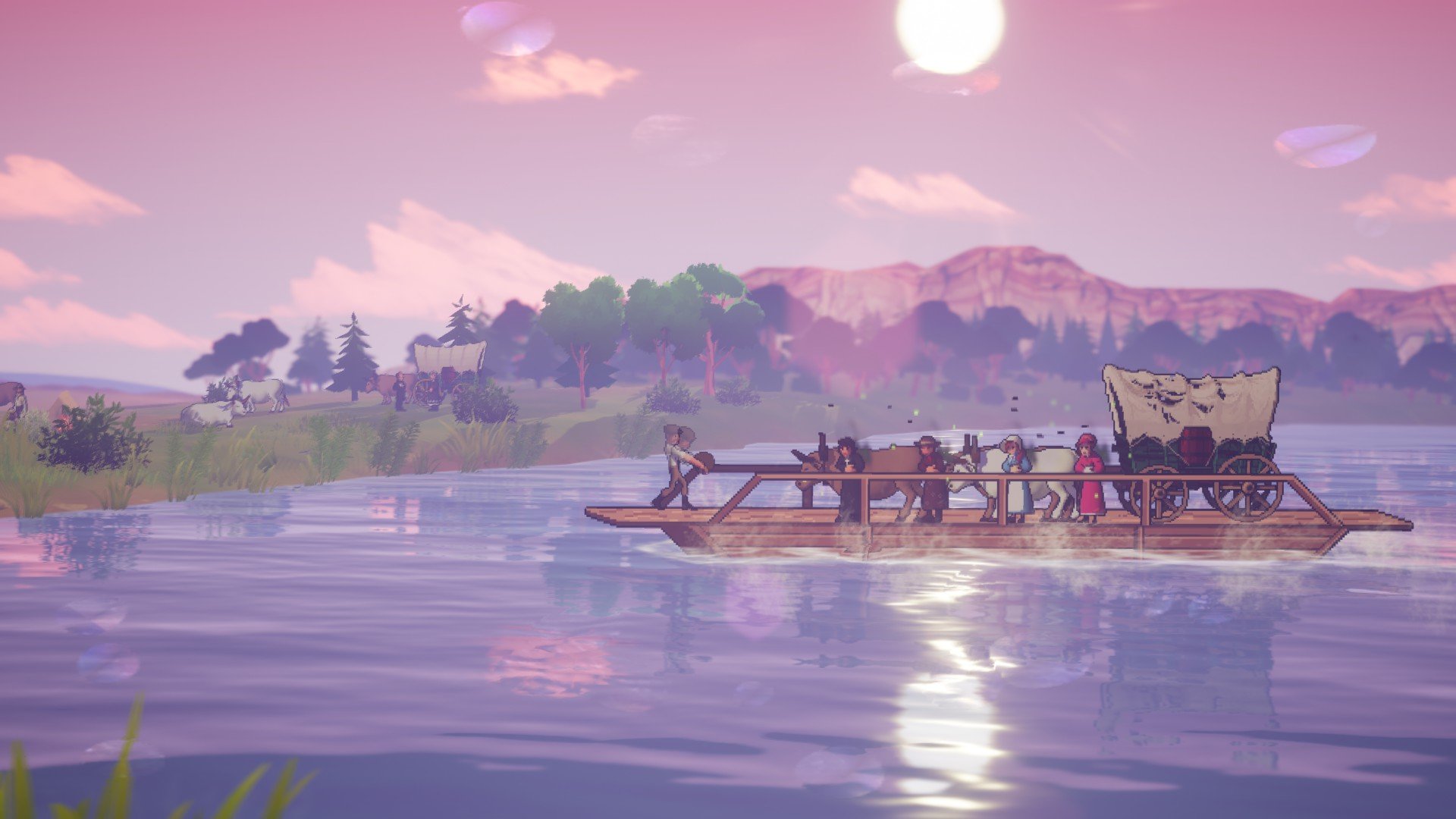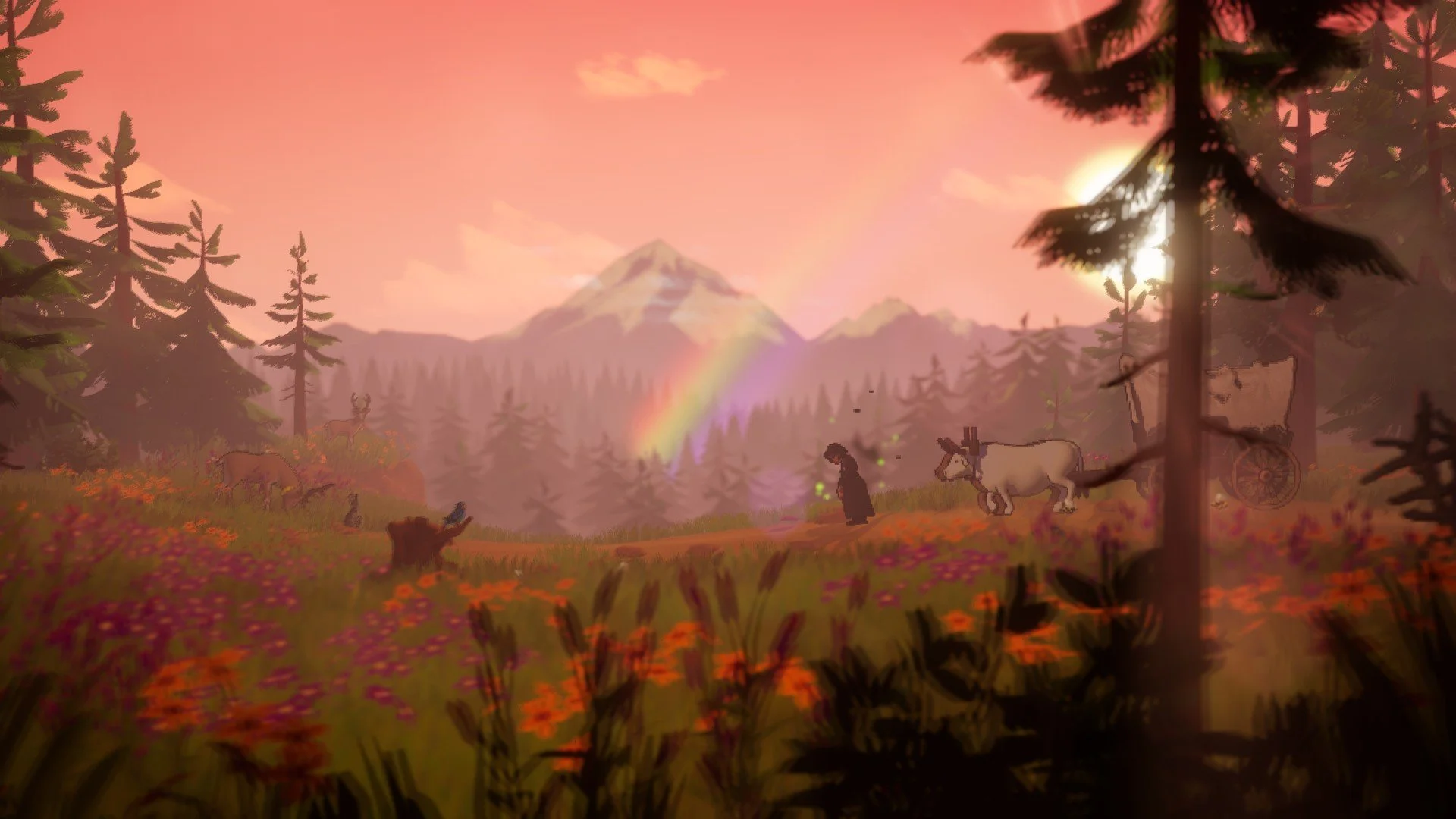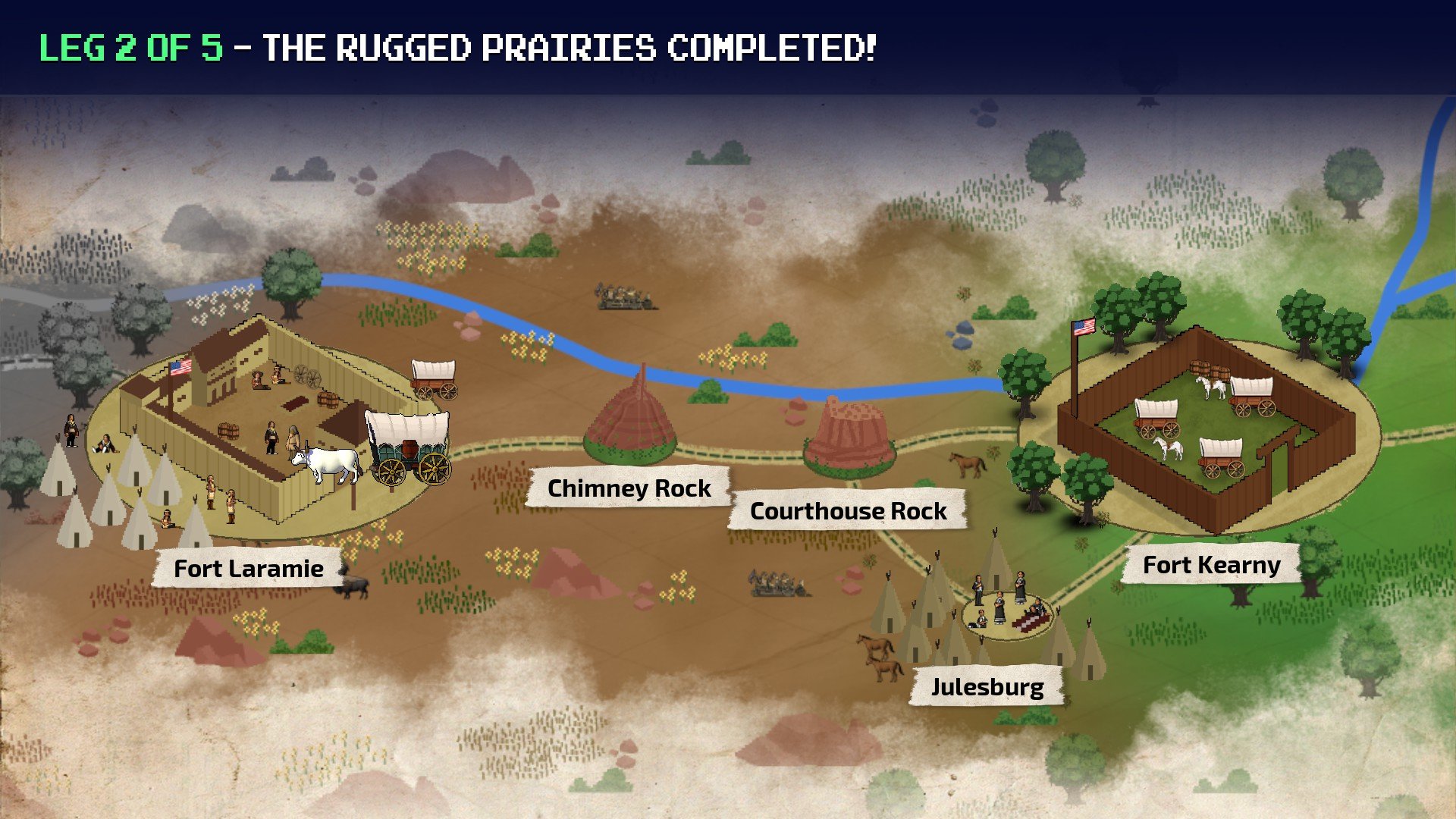The Oregon Trail Review
The Oregon Trail
Developer: Gameloft
Publisher: Gameloft
Platforms: PC, Switch, IOS
Release Date: November 14, 2022
MSRP: 29.99
It can be hard to talk about The Oregon Trail
The little franchise that could from the Minnesota Educational Computing Consortium began in 1971 as little more than text, before being rereleased for the Apple II with an updated graphical interface, becoming a fond and memorable (if frustrating) experience for grade-schoolers and middle-schoolers alike. Discussing the modern update of The Oregon Trail means engaging with that legacy, which is both inevitable and kind of unfair. Gameloft’s 2021 update of The Oregon Trail, ported here to PC from its mobile incarnation on Apple Arcade, is decidedly not the Oregon Trail we know and love. It’s different. But as much as it should be evaluated on its own merits and discussed as its own thing, it’s still difficult to completely separate. Which is a shame, because despite some wrinkles, the new and updated Oregon Trail is a really solid game that improves upon some weaknesses of the series.
There are some who might be unfamiliar with The Oregon Trail, so here goes: You are a settler on a cross-country journey from Independence, Missouri to the promised land of Oregon with a wagon train. You choose your traveling companions, wagon type, any provisions, and then set off across the vast countryside on a mission to reach the Pacific Northwest or die trying. Along the way, you encounter a staggering array of hazards, everything from wagon breakdowns to getting shot because you try to take bullets through the high desert. But with enough luck, skill, and careful planning, you can brave the trip across America and find your place in a new land.
The Oregon Trail is fairly basic gameplay-wise. You choose things from a variety of menus, set your pace and ration consumption, and hit the “travel” button. Along the way, you choose which direction to take from a node map similar to FTL and games of that stripe, leading to a number of encounters on your way between destinations. This also adds a layer of strategy to the game— do you go for the sidequest and possible rewards down the line, or do you make sure your settlers have the bath they sorely need at the campsite and miss out on further encounters? It adds a layer of strategy missing from the basic gameplay of “travel, hunt, rest, random event,” and does actually pull the game into a little more of a narrative than “this guy I named after my friend died of cholera because I didn’t rest long enough.” It improves the gameplay just enough while keeping the classic feel, adding narrative to a game that always had the bones for emergent narrative but perhaps a little less story. Thankfully, that story has been vastly expanded.
That expansion comes in the form of multiple side-stories, each with their own unlocks for the main game. There are boasts between hunters around the campfire, a trilogy of stories about a family reuniting over the course of the trail, a group of gold rushers heading to California, and in one of the nastiest stories ever put in a comparatively lighthearted adventure game, the journey of a group of arms merchants to a fort over an inhospitable desert. Each one has its own set of mechanics, narrative, and characters, using the general framework of The Oregon Trail to tell a wide variety of stories within its compact confines. Sidestepping some of the previous iterations’ more culturally insensitive moments, it also portrays indigenous Americans as fully realized characters in their own right, their stories standing out every bit as much as their counterparts. It’s a way to introduce variety into what’s a very straightforward game, and one that, while not really needing the expansion of its story, benefits from it.
The graphics overhaul also adds something to the game, nicely balancing the retro feel with the overworld map, pixelated art style, and travel nodes, but making the most of PC graphical displays with its expansive vistas and long treks— there are beautiful sunsets, wide open skies, roaring rivers, and some beautiful forests to explore on your trek northwest. It’s a gorgeous game, with characters trudging across the screen as a variety of pixelated wildlife flies to and fro across your field of view, day and night cycling as you stop. The music also adds to this, while there are few tracks, it creates a sense of forward momentum, always ambling towards the next destination, enjoying the scenery on the way. There’s even a wildlife and sightseeing mode for those who’d rather just sit and enjoy things for a while. It’s an excellent use of modern resources to update something older, and it makes the whole work feel of a piece.
But while the updates and expansions to The Oregon Trail are welcome, Gameloft’s update is unable to escape some of the game’s flaws. Once you’ve played the stories to completion, you’re basically done with them. When you play the main game there are a few side quests and random events, but you’ll quickly see them all within your first two plays of the main game mode. It makes things feel wide, but ultimately shallow, like a huge puddle. Once you take enough journeys along the Trail, there’s just not much there to explore, and all the gorgeous scenery along the way can’t hide that. Even the side stories get a little repetitive on repeat plays. The game is wonderful that first or second time through— I personally lost hours to it when I started it up— but the lack of longevity made me wonder if I should keep playing or set it aside after I managed to beat it.
Compounding this, the random events have somehow gotten more random. It made sense that you could get things like cholera and dysentery along the trail. They seemed like sicknesses and ailments that would genuinely happen, along with things like wagon breakdowns, injuries, drowning, and attacks by bandits and wild animals. But explain to me how someone can go from perfectly fine and in full health to suddenly dying because she broke her arm when the wagon rolled over her, followed by dying seconds later from a broken arm I had no chance to treat? I understand bringing ammo into the high desert resulted in one of my settlers being shot, but the randomness of it, the sudden lethality, and the necessity of the ammo (hunting and fishing are the only ways to get a decent amount of food between settlements and without trading) with no way to mitigate things made it seem needlessly cruel. There were times when I’d have a 95% chance of crossing a river, and then lose my entire expedition while the game chided me for not caulking my wagon, a thing I’d actually successfully done. There were other times where suddenly my wagon would just decide to fall apart. It elevated the normal brutality to a vicious streak of nihilistic fatalism, and one that made it difficult to want to continue playing the game.
So in the end, what’s left is…complicated. A marked improvement over past Oregon Trail games? Certainly. It’s gorgeous, addictive to play, has a ton of content (and more on the way) and it’s worth it for those initial vibrant bursts. But once those bursts wear off and the honeymoon period is over, you’re left with a game that while interesting, fun, addictive, and great to look at, is also shallow and needlessly cruel. It’s a game that matches its legacy— fond memories of the good times you have while playing it, but a hesitation to start things up again once you finally make it down the Trail.
The Good:
- Gorgeous graphics and music
- Addictive core gameplay loop
- Interesting and fleshed-out characters
- Unlock system that rewards playing through the different modes and side stories
The Bad:
- Replay value wanes quickly
- Needlessly cruel RNG
Final Score:
A lovely update that unfortunately can’t completely escape the original







